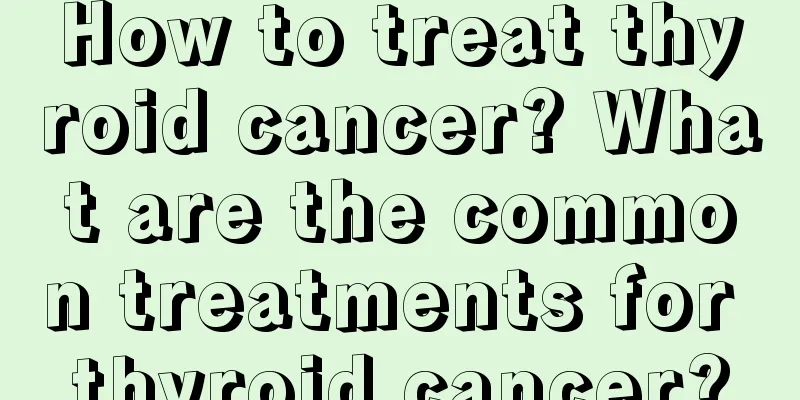How to treat thyroid cancer? What are the common treatments for thyroid cancer?

|
Thyroid cancer is pathologically divided into papillary adenocarcinoma, follicular adenocarcinoma, undifferentiated carcinoma, and medullary carcinoma. The main treatment methods are: (1) Surgical treatment: Surgical resection is the main treatment method. Different surgical methods are used according to different pathological classifications. During the operation, the recurrent laryngeal nerve should be damaged as much as possible, and the cervical lymph node dissection should be performed. (2) Radiotherapy: Anaplastic thyroid cancer progresses rapidly, with compression symptoms and distant metastasis appearing 2 to 3 months after onset. Surgery is generally unable to completely remove the tumor and is likely to cause more blood metastases. Treatment is mainly radiotherapy. (3) Radioisotope therapy: The therapeutic effect mainly depends on the amount of iodine-131 (131I) taken up by the tumor. Highly differentiated papillary adenocarcinoma and follicular adenocarcinoma take up more radioactive iodine and have better therapeutic effects. Undifferentiated cancer has lost the structure and properties of the thyroid gland, so it takes up very little radioactive iodine, resulting in poor therapeutic effects. Medullary carcinoma is ineffective for radioisotope therapy. (4) Radioactive particle implantation: Radioactive particle implantation can effectively control tumor development. At the same time, because the radiation exposure is mainly confined to the inside of the tumor, the systemic reaction is mild and the impact on the surrounding normal tissues is small. (5) Argon-helium cryotherapy: For patients who cannot undergo surgical resection or cannot tolerate surgery, argon-helium cryotherapy can effectively relieve tracheal compression symptoms and kill some tumor cells. As a palliative treatment for thyroid cancer, it can effectively improve the patient's symptoms and prolong life. (6) Radiofrequency, microwave and other treatments: As part of the local treatment of thyroid cancer, they have the characteristics of less trauma, faster recovery, definite efficacy and fewer complications. They can be used for palliative treatment after tumor recurrence or failure of radiotherapy. (7) Electrochemical therapy: For tumors that cannot be surgically removed or recur after surgery, electrochemical therapy can significantly shrink the tumor or even make it disappear. The treatment method is simple and causes little damage. |
<<: What are the benefits of breastfeeding? Can breastfeeding prevent breast cancer in women?
>>: How long can you live with melanoma? Melanoma treatment
Recommend
The difference between menstrual blood and normal blood
Menstruation is a familiar physiological phenomen...
What is the reason that pancreatic cancer easily enters the lives of patients?
Nowadays, many people are troubled by pancreatic ...
What are the causes of bone cancer
What are the causes of bone cancer? No one wants ...
How long is the shelf life of sago
Tapioca pearls still have a certain shelf life. I...
Treatment methods for sequelae of craniotomy
In daily life, people may undergo craniotomy due ...
Causes of itchy skin due to gallbladder cancer
Cancer is very common in our lives. Once we suffe...
Is liver cancer contagious
Is liver cancer contagious? This is a question th...
What's going on if there's one less piece of tongue coating?
The tongue coating is very important. It contains...
What are the methods to remove pubic lice
Everyone knows that pubic lice are small insects ...
Does spinning bike reduce calves size?
Having slender legs is what women desire most, so...
How to remove oil stains from clothes
Washing clothes is a very troublesome thing, espe...
What is the incidence rate of brain cancer?
Intracranial tumors, namely various brain tumors,...
My face feels itchy after applying the mask
Nowadays, everyone loves beauty, and the pursuit ...
How to eliminate forehead wrinkles?
Modern people have a very positive attitude towar...
Symptoms of breast cancer recurrence after surgery
Symptoms of breast cancer recurrence after surger...









